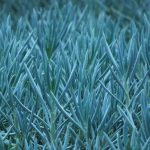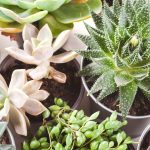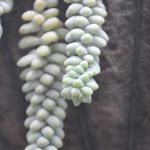If you are on the lookout for a fresh addition to your indoor plant collection, the string of watermelons plant could be a perfect choice. This unique succulent is not only aesthetically appealing but also relatively easy to cultivate. Join gardening expert Paige Foley as she delves into the world of string of watermelons plants and how to care for them!
Cacti & Succulents
Curio Herreanus: Growing Tips and Care Instructions for String of Watermelons
Are you a fan of the String of Pearls but in search of something more distinctive? Curio Herreanus, colloquially known as the String of Watermelons, might pique your interest. This succulent is characterized by its low-maintenance nature, making it an ideal option for novices in succulent gardening.
String of Watermelons plants thrive elegantly as they trail down shelves, bookcases, or hanging plant holders in corners. While they are perfect for indoor settings, in warmer regions, you can opt to cultivate them outdoors, either in rock gardens, under trees and shrubs, or within planters. Their vibrant green foliage adds a touch of visual charm to any space.
This delightful trailing succulent is quite adaptable and, with adequate light, water, and nutrients, flourishes abundantly. While they excel as houseplants, they can also thrive outdoors year-round in specific hardiness zones. The increased popularity of this succulent is attributed to its easy-going care requirements and visually pleasing aesthetics.
Caring for a String of Watermelon plant doesn’t have to be overwhelming. While it may involve some trial and error initially, once you grasp their needs, maintenance becomes a breeze. Let’s delve deeper into the world of String of Watermelons plants and explore the best care practices.
Curio Herreanus Plant Overview
|
Plant Type
Perennial
Family
Asteraceae
Genus
Curio
Species
Herreanus
Plant Spacing
2 feet + |
Native Area
Africa
Sunlight Exposure
Full Sun |
1-2’
Medium
Soil Level
9-12
Low
Sandy, well-draining
Mealy bugs, aphids, spider mites
Fungal Disease
About String of Watermelon
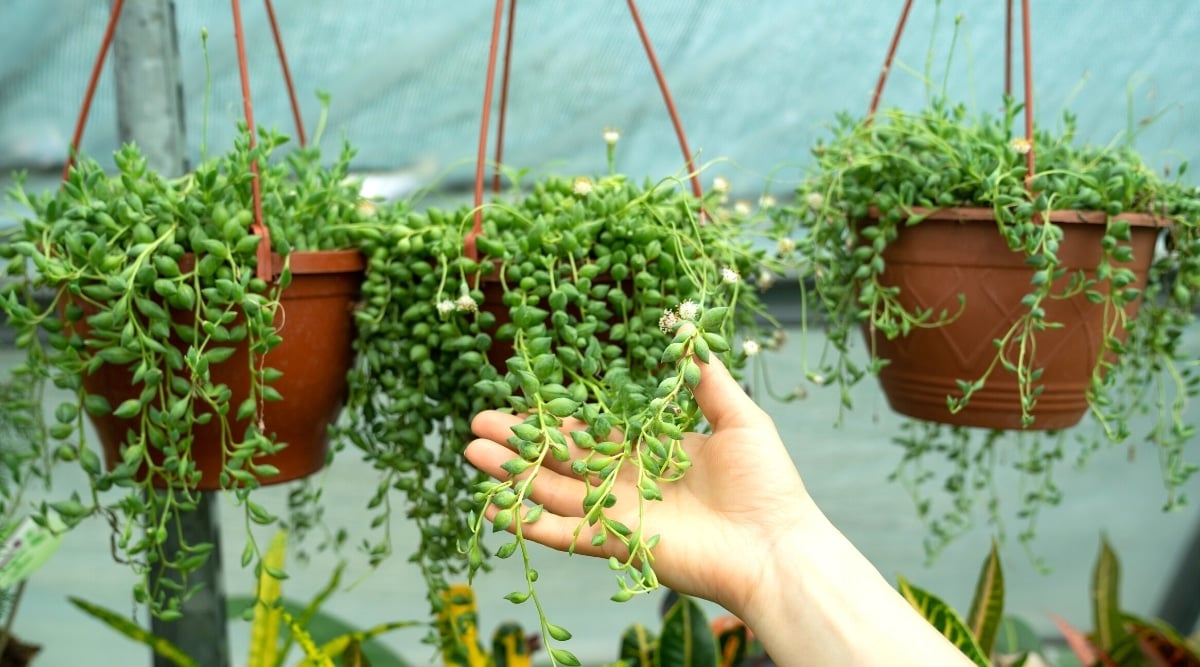
String of Watermelons, also known as String of Tears, String of Raindrops, and String of Beads, resembles String of Pearls but with more teardrop-shaped leaves. Some leaves may have purple stripes, resembling tiny watermelons. They bloom small white flowers during the spring and summer.
A lovely trailing succulent from the Asteraceae family, formerly known as Senecio herreanus, String of Watermelons hails from the deserts of South Africa and Namibia. While they naturally create ground cover, they are popularly grown indoors in planters or hanging pots.
Whether indoors or outdoors, String of Watermelons thrives, often as a stunning houseplant. They make a charming addition to decorative pots, elegantly cascading down shelves, bookcases, or plant hangers. For outdoor growth, consider using them as ground cover in rock beds, wall crevices, or succulent gardens.
Size and Growth
String of Watermelon is a low-growing succulent that spreads widely with its long, slender stems reaching up to 2 feet in optimal conditions. The round leaves, usually up to an inch in size, exhibit purple, translucent stripes reminiscent of a watermelon’s markings that intensify under bright light.
During colder months, the plant may enter a dormancy phase, halting growth temporarily. Indoor specimens may not show noticeable changes, maintaining their vibrant green appearance until spring brings warmer temperatures.
How to Care for String of Watermelon
String of Watermelon, like other trailing succulents such as String of Pearls or String of Bananas, doesn’t demand extensive care. However, to ensure a prolonged lifespan, providing the right care is paramount. Let’s delve into the essential care guidelines required for this charming succulent.
Lighting Needs
Meeting the sunlight requirements for Curio herreanus can pose a challenge due to its high needs, which may vary depending on whether it’s cultivated indoors or outdoors. Optimal outdoor growth typically occurs in partial shade, emulating the plant’s natural habitat where it thrives beneath trees and other natural shading elements.
For indoor cultivation, bright sunlight exposure for 6 to 8 hours daily is recommended to prevent leggy growth.
Watering Instructions
String of Watermelon, a drought-tolerant plant that stores water in its leaves, can endure prolonged periods without regular watering. The watering frequency varies based on indoor or outdoor settings. Typically, water every 7 to 14 days, adjusting for outdoor conditions with more frequent watering if necessary.
Ensure proper drainage to prevent overwatering, allowing the soil to partially dry between waterings.
Soil Requirements
Similar to most succulents, String of Watermelon prefers well-draining soil with added gritty materials such as sand or perlite for optimal growth. Standard succulent potting mixes are suitable and readily available at garden centers.
For proper succulent growth, it is essential to ensure the soil has good drainage. Creating a suitable succulent soil mix involves blending standard potting soil with perlite or sand. To avoid issues like root rot, outdoor growers may need to modify natural soils to enhance drainage.
Amend ground soil before planting to prevent damage to your succulent. Incorporating sand, gravel, or perlite into the soil mix aids in preventing waterlogging, which can lead to fungal diseases. Regular monitoring and prompt adjustments are crucial to maintaining optimal soil drainage.
Temperature


Native to regions with varying temperatures, Curio herreanus can endure a wide temperature range, even surviving lows of 25 F. However, extended exposure to cold temperatures can lead to plant shutdown and eventual death. Optimal growth is achieved within the temperature range of 68 to 95 F.
While suitable for outdoor settings, keep an eye on extreme temperatures and consider moving the plant indoors during significant drops in temperature. To induce dormancy and encourage spring flowering, expose the plant to temperatures of about 50 to 60 F.
Fertilizer
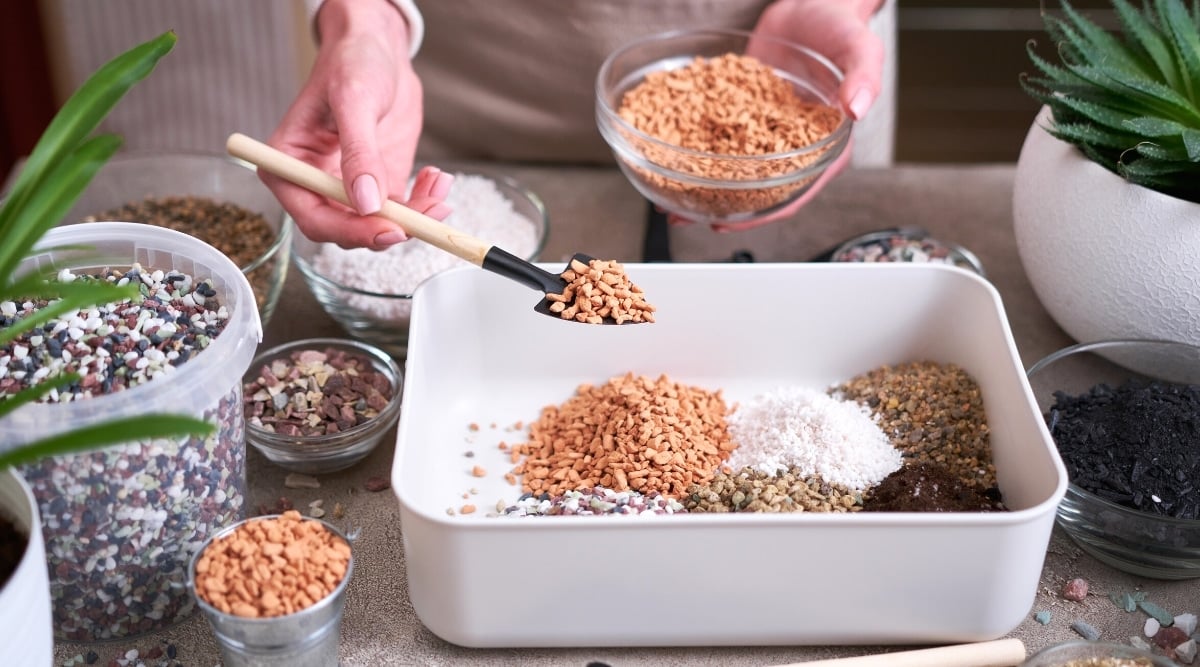

Curio herreanus can tolerate higher fertilizer levels compared to other succulents. During the growing season, feed biweekly with a well-balanced liquid or slow-release fertilizer. Adjust fertilization to every six weeks during winter dormancy to support the plant’s reduced growth activity. Apply fertilizer at the base to avoid leaf damage, especially in low-quality soils that deplete nutrients rapidly.
Maintenance
String of Watermelons is lauded for its low maintenance requirements but responds well to regular care. Routine maintenance efforts contribute to a vibrant and flourishing plant. Let’s look at the essentials of pruning and overwintering.
Pruning
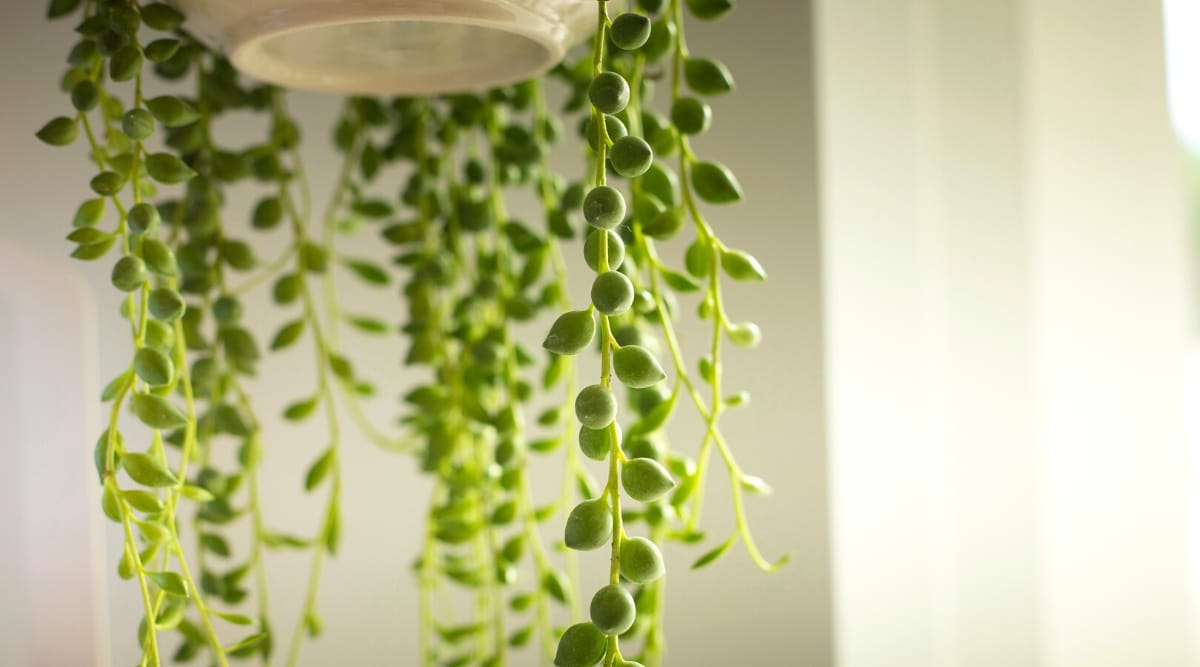

Regular pruning, ideally after flowering in spring or summer, helps maintain the desired shape of your plant and eliminate any unsightly growth. When your Curio herreanus starts looking leggy or woody, it’s time to trim back. Pruning not only enhances plant health but also gives you better control over its size and appearance.
Trim back dead stems near the base with sharp shears or scissors, cutting close to a node to encourage new growth. Leggy stems with sparse leaves should be trimmed to foster healthier growth patterns.
Overwintering
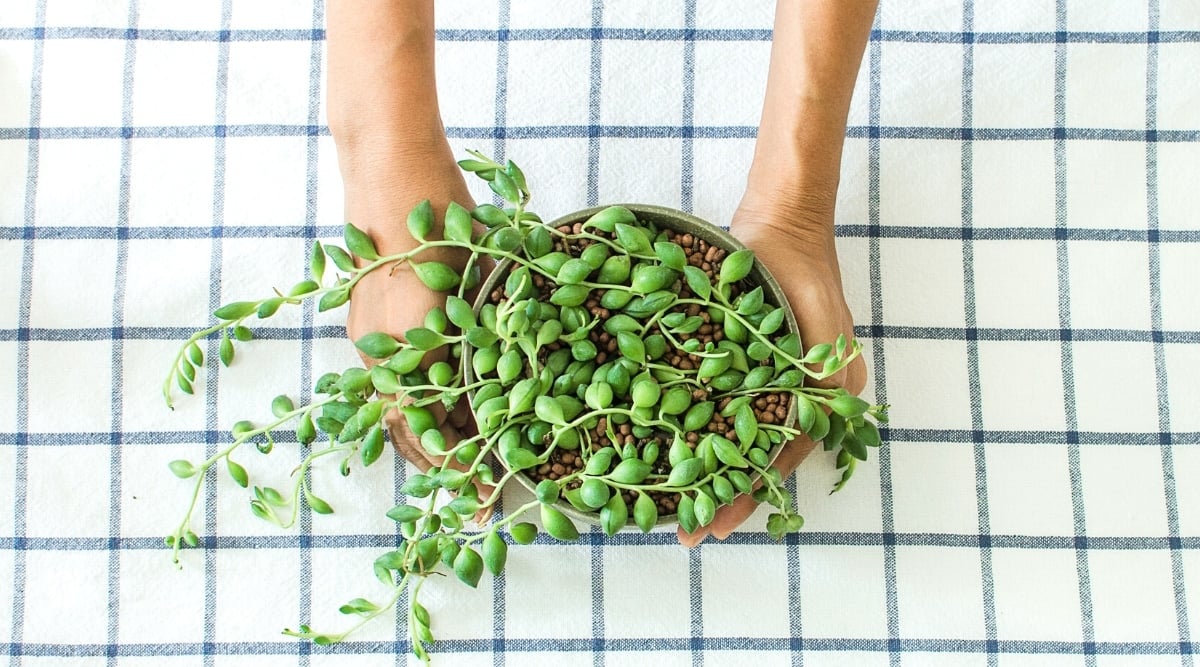
If you reside in zones lower than 9, it’s advisable to keep your succulent outdoors until the onset of colder weather. Once temperatures dip below freezing, it’s crucial to relocate your succulent indoors for the winter season. However, if you wish for your plant to bloom, exposing it to temperatures between 35 to 44 F can be advantageous.
For those aiming for blossoms, position the plant in a non-heated area with a minimum of 6 hours of direct light. Water sparingly, about once a month, during its dormant phase. In zones exceeding 9, you can leave the Curio Herreanus outdoors year-round without worry of cold-related damage. If flowering is not a priority, you may leave the plant in its current spot.
Propagation
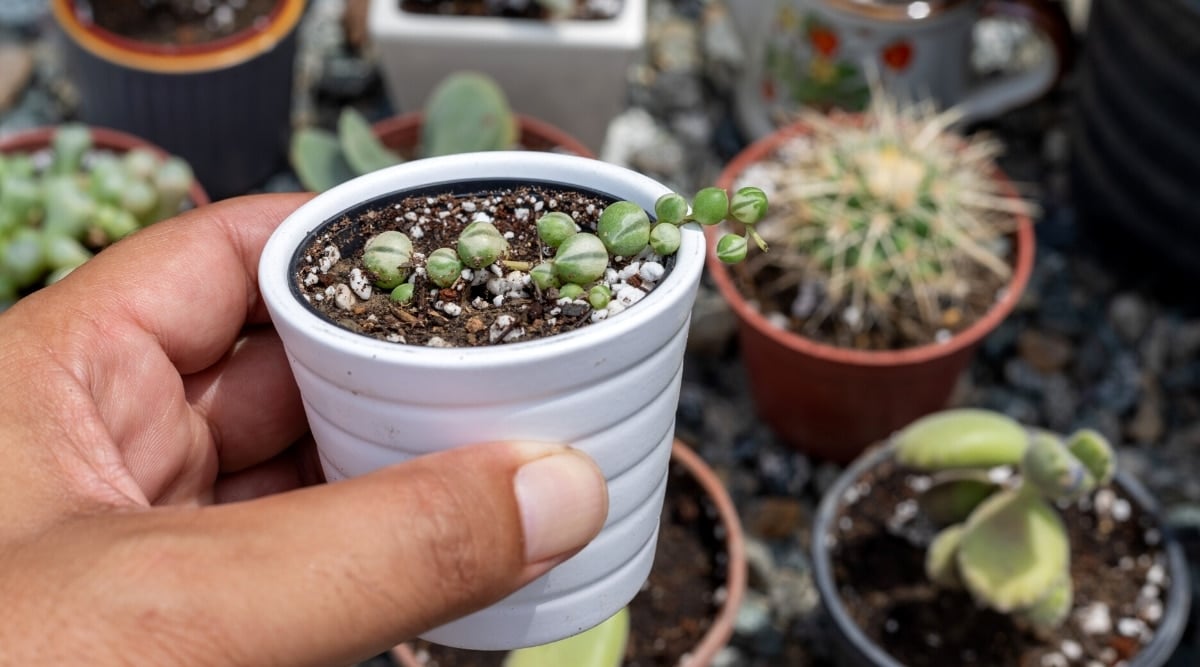
String of Watermelons can be effortlessly propagated by stem cuttings, ensuring the plant’s longevity beyond its typical 3 to 5-year lifespan. Optimal seasons for propagation are spring, summer, or early fall.
To initiate propagation, gather essential tools such as clean shears or scissors, 4 to 6-inch pots, and succulent soil. Cut multiple 4 to 5-inch stems just below a leaf node and remove lower leaves to facilitate root growth.
Let the stems dry for 1 to 2 days until a callous forms at the cut site. Prepare pots with succulent soil, create a hole in the center, insert the cut end of the stem, and surround it with soil ensuring foliage remains above the surface. After a few days, water lightly, place in a bright location, monitor moisture levels, and anticipate root development in 3 to 4 weeks.
Potting and Repotting
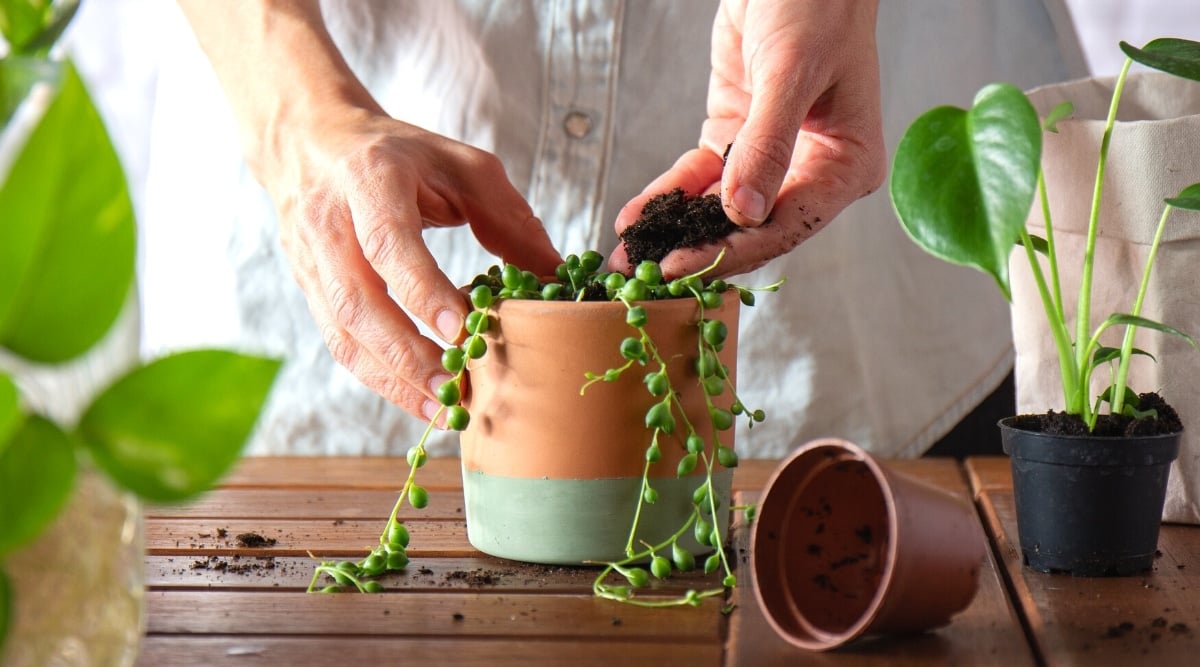
When repotting, spring is the ideal season using a well-draining soil mix within a suitable pot like terracotta or ceramic. These materials provide necessary airflow and drainage crucial for succulent health.
Ensure the new pot has drainage at the base to prevent root rot. Opt for a pot 2 to 3 inches larger and deeper than the current one for proper growth. Following repotting annually, plan to propagate as the plant typically declines after 3 to 5 years to sustain continual growth.
To repot, add soil to the base, gently remove the plant, place it in the new pot, surround the roots with soil, maintaining a gap below the pot’s lip, water lightly, and observe for signs of distress.


Noticed shriveling leaves on your Curio herreanus? This common issue, resembling raisins, is a telltale indicator of underwatering that can be easily prevented.
To combat underwatering, avoid letting the soil completely dry out between waterings. Only water when the top inch of soil is dry. Monitor soil moisture levels regularly to prevent excessive drying. If your plant struggles with water retention, consider altering its environment – from soil and pots to its placement and sunlight exposure.
Presence of Yellow Leaves
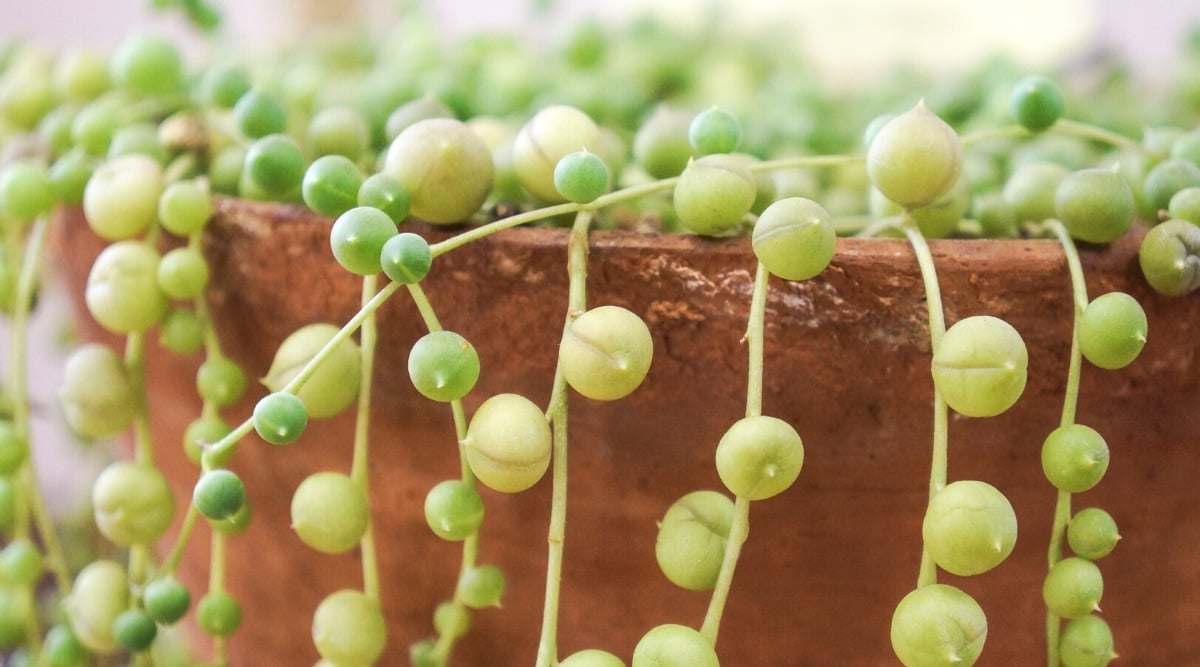

If you spot yellowing leaves on your plant, it could indicate an infestation, often caused by sap-sucking insects like aphids, mealybugs, or thrips. To prevent the spread of pests to other plants, isolate the affected plant immediately.
Swift pest control is crucial. Implement appropriate treatment methods until the pests are eradicated. Research tailored pest control strategies for effective pest removal.
Soft, Mushy Stems
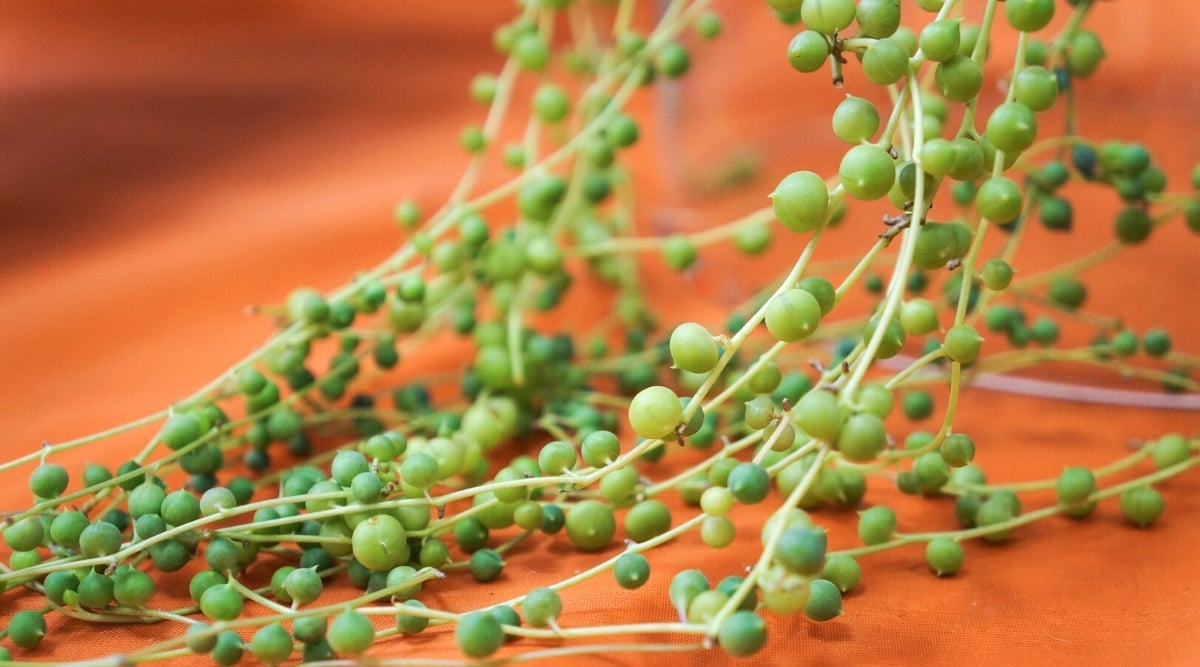

Soft and mushy stems may signify overwatering with potential root rot, causing the stems to deteriorate. If left untreated, this fungal disease can spread and imperil the plant.
Prevent overwatering by adhering to a consistent watering schedule and monitoring soil moisture levels. Opt for well-draining succulent mix if soil drainage issues persist.
Pest And Diseases
Despite their resilience, Curio herreanus can be susceptible to various pests and diseases. Explore the common challenges you might encounter during your plant’s lifecycle.
Root Rot
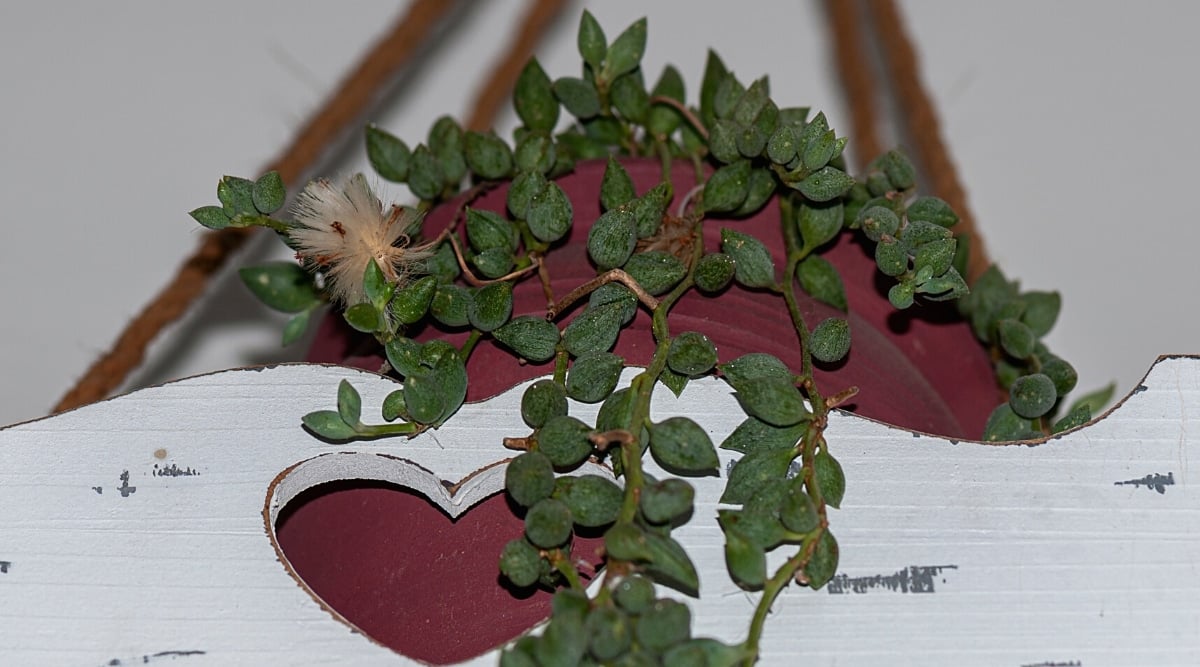

String of Watermelons are generally robust against pests and diseases with proper care. However, deviations from ideal growing conditions can cause susceptibility to diseases and pests.
Most notably, root rot poses a significant threat to Curio herreanus plants. This condition emerges from excessively damp soil or prolonged root exposure to standing water, leading to gradual plant deterioration. Swift intervention and optimum drainage practices can salvage affected plants.
For healthy growth, ensure well-draining soil and pots with adequate drainage holes. Regularly check soil moisture levels to prevent waterlogging. If soil conditions are persistently damp, consider repotting the plant.
Aphids
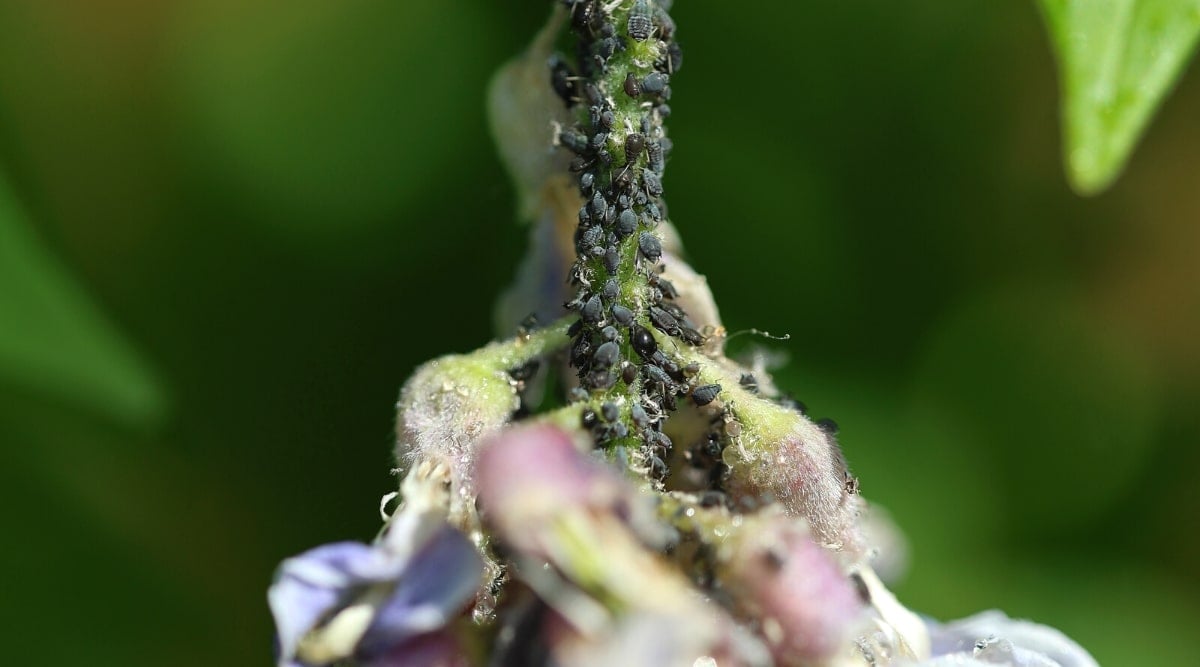

When it comes to common houseplant pests, one must watch out for aphids. These tiny lime-green creatures tend to invade the fresh growth areas of plants, slowly sapping away their vitality. Early detection is crucial to prevent damage, so immediate action is necessary upon spotting them.
To address an infestation, isolate the affected plant and initiate treatment using various methods available. Whether opting for natural remedies or chemical solutions, it’s imperative to follow product instructions meticulously. These treatments can be conveniently sourced online or at local garden centers.
Mealy Bugs
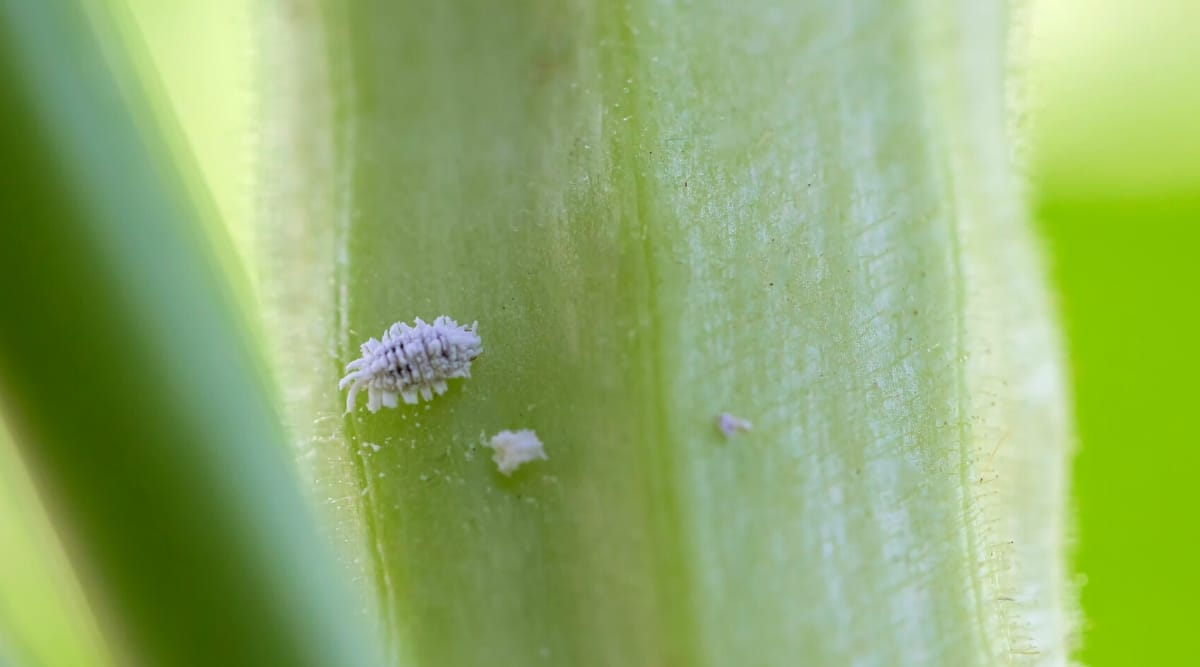
In a scenario reminiscent of aphids, mealy bugs pose a similar threat. These sap-sucking insects, with their pale pink to white furry bodies, can swiftly infest and migrate from one plant to another. Mealybugs typically congregate at leaf intersections and young growth sections.
Handling mealybug infestations on succulents proves challenging due to the small size of the juveniles, often hiding in unreachable spots for chemical treatments. For minor cases, manual removal or washing them off can suffice. However, severe infestations necessitate using alcohol-soaked cotton swabs to eliminate both bugs and any resulting mold.
Frequently Asked Questions
Are they poisonous plants?
Succulent plants like this one are toxic to dogs, cats, and humans. Extra care should be taken when cultivating them indoors in households with pets or children to prevent ingestion.
How long will they live?
String of Watermelons, a type of succulent, is a short-lived perennial lasting only 3 to 5 years. Prioritized propagation before plant decline ensures continuous growth.
What kind of pot should I use?
Choosing the appropriate pot for succulents is crucial. Terracotta or unglazed ceramic pots are ideal as they promote adequate airflow. Moreover, ensure the pot has drainage holes to prevent water retention.
Final Thoughts
String of Watermelons, a charming and easily managed succulent, thrives when provided with proper lighting, watering, and soil conditions. With care, this Curio herreanus species can flourish for 3 to 5 years. Once signs of decline appear, propagation of new cuttings is essential to sustain the plant’s longevity.

